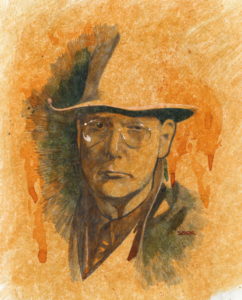
It’s time for two more reviews of Perry Mason. No, not the television series starring Raymond Burr as Perry, but the novels upon which it were based. These mystery novels came from the pen of the old pulp master Erle Stanley Gardner.
Erle Stanley Gardner was born in 1889 and grew up to become a lawyer. He studied law in Indiana and California, passing the bar in 1911. He drifted in and out of the practice of law until he finally left to devote himself to full-time writing in 1933. For the previous 10 years, he had been writing and was being regularly published in pulp magazines such as Black Mask, Argosy, Clues, Dime Detective and Double Detective. But 1933 marked the publication of his first Perry Mason mystery, not for the pulps, but for the hardback book trade. The Perry Mason series became his most famous creation, and he continued writing it until his death in 1970. In all, he wrote 86 Perry Mason murder mysteries.
‘The Case of the Black-Eyed Blonde’
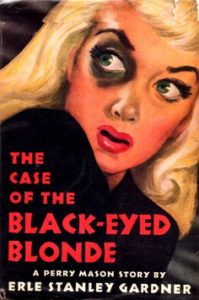
The Case Of The Black-Eyed Blonde is the 25th in the line of Perry Mason mysteries penned by Erle Stanley Gardner. And it marked the return of Perry’s police nemesis, Sergeant Holcomb. Lieutenant Tragg is also here, but there’s no sign of Hamilton Berger. Minor characters Gertie and Jackson don’t show up either. So, it’s Perry, Della and Paul against Tragg and Holcomb.
Diana Regis is the beautiful and classy young blonde who shows up at Perry Mason’s office with a black eye. She tells a tale of a wealthy young heel with a slick exterior who gave her the shiner, and asks for Perry’s help. But before you know it, Diana’s roommate, Mildred Danville, is dead, and Diana is accused of the murder.
It all has something to do with a missing grandchild, whom the grandfather never knew existed. The murdered woman knew something about the child, something sinister enough to demand her death. Perry Mason has to get to the bottom of the strange twists and turns in this case and discover the identity of the true killer.
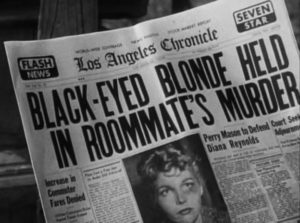
There is less courtroom action in this one, but still enough to satisfy any Perry Mason fan. And the resolution of the crime takes place outside the courtroom. It’s a bit more complicated than the earlier stories, but a very satisfying one.
The scriptwriters on the Perry Mason television series used the original novels as inspiration for many of their hourly episodes. During it’s nine-season run, it broadcast 271 episodes, so it’s understandable that the Gardner-written mystery novels were an easy and readily-available source for the weekly episodes.
“The Case Of The Black-Eyed Blonde” was broadcast near the end of the first season, on June 14, 1958. Of note was the role of Norma Carter, played by Phyllis Coates. She played television’s first Lois Lane in 1952 and 1953 on The Adventures of Superman.
‘The Case of the Golddigger’s Purse’
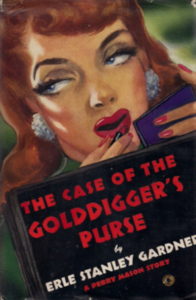
Erle Stanley Gardner’s 26th Perry Mason mystery was The Case of the Golddigger’s Purse. Perry, Della and Paul are all back, as is Lieutenant Tragg. No sign of D.A. Hamilton Burger, though. Gertie and Jackson are also no-shows. And it’s also a little light on the courtroom scenes. But it’s still a winner!
What’s in the golddigger’s purse? Two thousand dollars in cash, and a revolver. A revolver that has Della Street’s fingerprints on it. A revolver that’s been used to murder Harrington Faulkner. Sally Madison is the golddigger with the murder weapon in her purse. And Perry Mason must clear Sally of the murder charge before Della is drawn into the web of suspicion as well.
Yes, another great entry in the Perry Mason series. Although it was written during World War II, there’s no mention of the war; no mention of rationing; shortage of young men; nothing. So as the story is being read, it can be placed in nearly any timeframe. Just pay attention to the details.
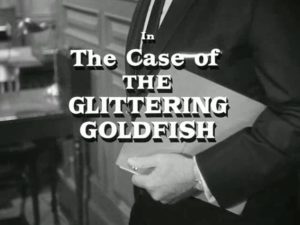
This mystery novel was not adapted for an episode in the television series… at least not officially. There was no TV episode with that title. But there are enough parallels between the book and the season two episode “The Case of the Glittering Goldfish” to cause many to wonder if this was an unofficial version of Gardner’s tale. There has been speculation that the title had to be changed because the “golddigger” of the title was dropped as a character in the TV episode. But the book and the TV script are similar in many other respects. Maybe you should read the book… watch the TV show… and make up your own mind.
In fact, either of these two mystery novels would make great reading. I certainly recommend them both. Written by a pulp master, they’ll keep you glued to your chair just to read “one more chapter.”

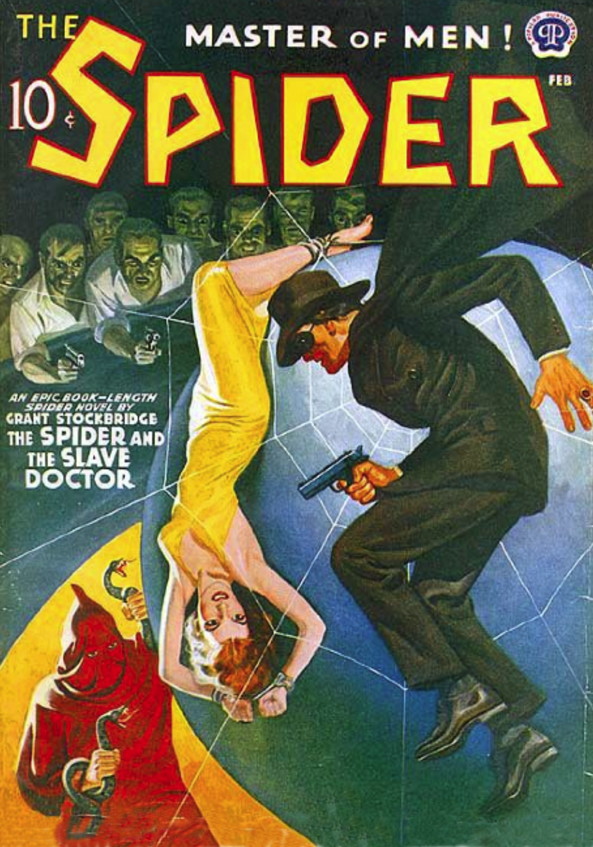

From these posts on “That’s Pulp!” chronologically tracking the progress of Erle Stanley Gardner’s Perry Mason novels by reviewing the novels one by one, a person might get the idea that Gardner had stumbled on a pretty good racket after all those years sweating out stories for pulp magazines. As Popular Publication publisher Henry Steeger said, “I remember Erle Stanley Gardner saying that one day that, by Gosh, he was going to outlast H. Bedford Jones” ( Xenophile 1977 ). Through his prodigal production, Gardner plotted to dethrone one of the potentates of pulp-magazine productivity and prestige.
While Jones drew on history for setting and conflict in his stories, Gardner was not so gifted. Compared to Jones, his settings were more prosaic, at best brightened by the beauty of the desert. The conflict in Gardner’s stories derives from a lawyer’s sense of justice.
With typical crime stories in pulp magazine as well as with crime stories elsewhere, after discovery and struggle the culprit is delivered over to the law and justice is served; a lawyer working within the law would say that is phooey. He would say the intentions and imperfections of the people representing the law make the law an imperfect and an inadequate reflection of justice. Serving his client’s best welfare, an attorney is dedicated to individual justice.
Gardner would be like a lawyer who maintains the innocence of his clients although he knows that not all of them are completely innocent. He has the common sense to know that the opposite applies to the police. Just as he knows that some of the people about whom he insists to the court are innocent are indeed guilty, he can extrapolates the reverse that the police in pursuit of an arrest press charges against some who are indeed innocent.
The two most popular series characters that Erle Stanley Gardner wrote for pulp magazines were Ed Jenkins, a crook who skirts the law and Lester Leith, a lawyer who skirts the law. Ed Jenkins stories ran in Black Mask from 1925 to 1943 with a book-length swam song in Argosy 1961. Lester Leith stories ran in Detective Fiction Weekly/Flynn Detective Fiction from 1929 to 1943.
In a 19 December 1939 letter to George Harmon Coxe, whose stories frequently appeared in Black Mask; Raymond Chandler wrote, “…a book called The Bigger They Come by A. A. Fair which copies the Gardner technique exactly and even swiped Gardner’s idea of how Ed Jenkins couldn’t be extradited.” Putting aside whether Chandler had his tongue in his cheek when he supposedly demonstrated his ignorance that Gardner and Fair are one and the same, what is interesting is that the matter of legality caught Chandler’s eye. Gardner’s treatment of how the nature of the law affects an individual is what stood out.
These posts on “That’s Pulp!” remind us of the sheer number of entries into the Perry Mason saga. Although the number is high, it represents a fraction of Gardner’s overall output. Through many of his stories, as it does prominently in the Perry Mason novels, runs this conflict of the law versus justice.